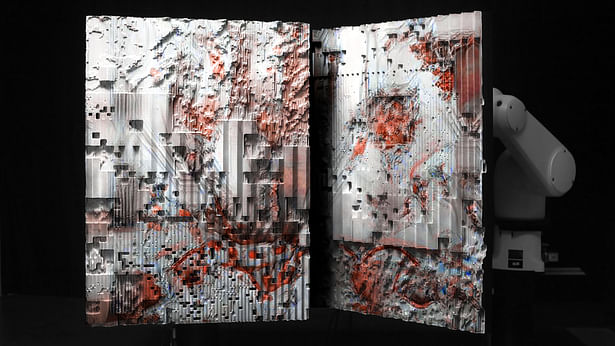
A school of architectural thinking
Los Angeles, CA
Request Information
Media Inquiries:
Stephanie Atlan, news@sciarc.edu, 213-356-5395
Los Angeles, CA (December 9, 2019) - SCI-Arc is pleased to announce some exciting updates to its postgraduate Master of Science degree program in Architectural Technologies. Already a robust critical exploration of the technical and material methodologies employed in the contemporary practice of architecture, the Architectural Technologies program is shifting its focus to include a stronger emphasis on emerging technologies. Building upon already strong foundations in digital modeling, fabrication, and visualization, the program has been recently investing in new technologies such as artificial intelligence, machine vision, augmented reality, and platform design. To guide the program into the new frontiers of architectural technologies, SCI-Arc is proud to announce that SCI-Arc faculty and algorithmic designer M. Casey Rehm will be the new coordinator of the program beginning fall 2020.
The Master of Science in Architectural Technologies is a one-year, three-semester program focused on contemporary and near-future design technologies. In a time when platform-based corporations like Katera, Sidewalk Labs, and WeWork have been encroaching upon territories traditionally associated with architectural practice, there is an increasing urgency for architecture to develop strategic practices that can work within the context of the growing prevalence of systematized workflows within design-oriented disciplines and industries. Moving forward, the program will seek to formalize connections between advanced topics in computational research with the rapidly developing innovations in platform applications, game engines, machine vision, and AI.
In recent years, Los Angeles has become an important international hub for technology startups, as companies have been drawn to the city’s unique geographical, cultural, and economic advantages. Tech giants like Amazon, Google, and Netflix have recently established a presence to benefit from the dynamic startup culture that is developing research and applications in AI, blockchain, and interactive media. Los Angeles is also the long-standing home to important venture capital culture and business incubators and accelerators such as Idealab in Pasadena, among others. The program seeks to actively engage new models of entrepreneurship to maximize student involvement with multiple forms of technological expertise in order to bring disruptive ideas into reality.
A primary interest of the program is to investigate how new platforms are fundamentally transforming the way we inhabit and experience the world. “The historical discipline of architecture is slow and has always had difficulty representing the present moment; architecture generally represents the world as it existed yesterday,” says David Ruy, Chair of Postgraduate Programs at SCI-Arc. “We would like to expose our students to technology as it exists now—much of which will come as a surprise—but you cannot be truly empowered in this day and age if you don’t fully understand the technological reality of the contemporary world.”
Though phenomena such as social media, data platforms, and automated infrastructures have not typically been thought of as problems of architectural technology, as machine intelligence converges with new managerial practices and automation, a new world is undeniably being built which is only beginning to be understood. In this contemporary context, the program seeks to engage the cutting edge of technology and develop new forms of architectural thinking.
Of the program Rehm states, “We are not interested in training a generation of software operators. Our students will graduate with design knowledge, a business plan, and a technology platform to accelerate the future of architecture.”
Click to learn more about the Architectural Technologies program and how to enroll.
No Comments
Block this user
Are you sure you want to block this user and hide all related comments throughout the site?
Archinect
This is your first comment on Archinect. Your comment will be visible once approved.